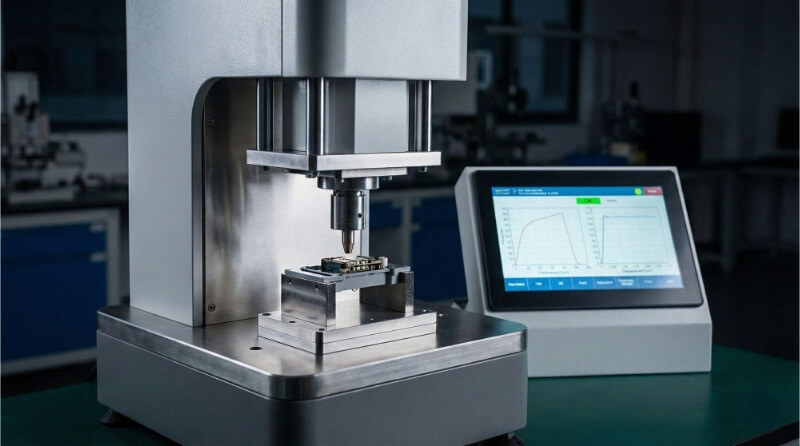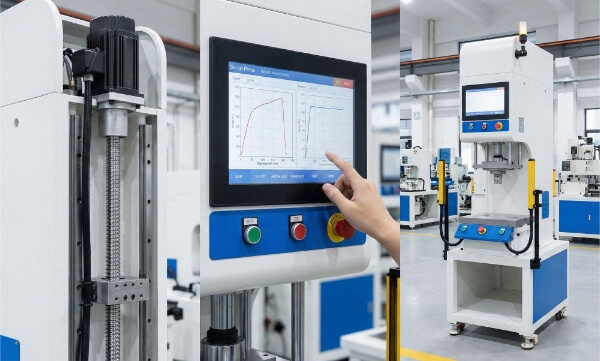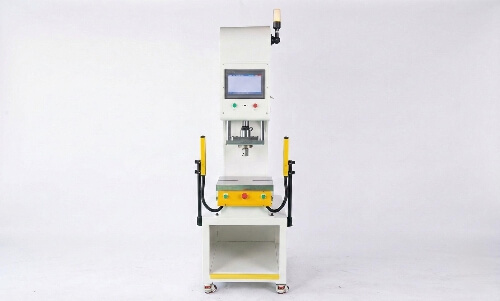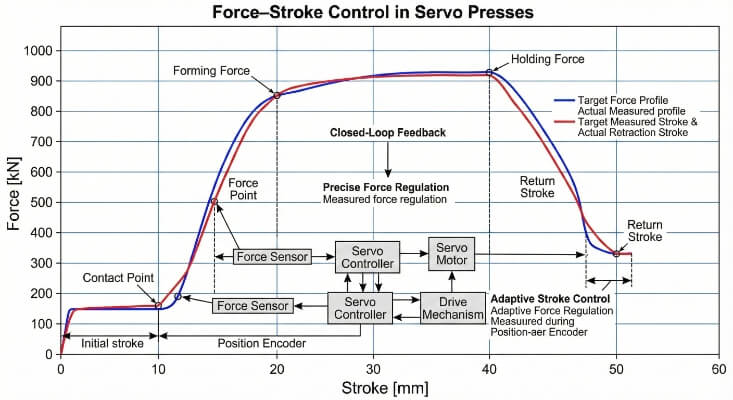GMAW is always mentioned when we discuss welding, particularly with aluminum. It’s popular among professionals because it uses a shielding gas and a wire electrode that is continuously fed. Why? It’s because it is fast, efficient, and adaptable.
GMAW aluminum welds offer a unique combination of speed and precision. This makes it ideal for projects requiring durability and fine details. This method is unique in its ability to weld aluminum efficiently and overcome challenges such as high thermal conductivity or susceptibility to warping, is widely used in wheelchair manufacturing, automobile production and industrial fields.
Stay tuned as I delve deeper into the technical aspects and practical tips for mastering GMAW aluminum welding.
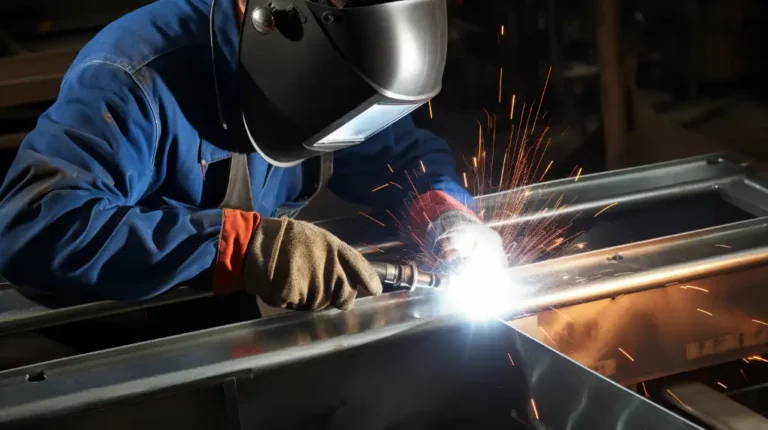
Basics of GMAW Aluminum Welding
Understanding GMAW Process and Principles
GMAW (Gas Metal Arc Welding) uses an electric arc formed between a consumable electrode wire and the metal piece. The metal is heated, melted, and joined. A shielding gas and the wire electrode are fed into the welding gun to protect the weld from airborne contaminants.
Overview of GMAW Aluminum Welding
Aluminum can be welded with GMAW, but precision and a thorough understanding of its properties are required. Aluminum is lighter than other metals and has higher thermal conductivity. GMAW can handle the material’s properties without causing warpage or burn-through.
Compare with other Welding techniques
GMAW, unlike TIG, is quicker and easier to learn. GMAW is ideal for thicker materials than TIG because it offers higher deposition rates.
GMAW Aluminum Welding: Equipment and Materials
The Right Welding machine
It is essential to choose the right welding equipment when it comes to GMAW. It should be able to meet the requirements of aluminum welds, which can often involve higher amperages and smoother feed wires.
Electricity Requirements
A welding machine that has a higher output, typically between 200 and 300 watts, is preferred for aluminum. It will be able to handle the high thermal conductivity of aluminum without overheating.
Adjustability Features
Choose machines that have adjustable voltage and wire feed speeds. It is essential to have this flexibility when welding aluminum to avoid distortion and burn-through.
Choose Aluminum Wire and Gas
The quality of your welding is greatly affected by the choice of gas and wire. Each option has a particular purpose and application for aluminum GMAW.
Different Types and Sizes of Wire
Alloys such as 4043 and 5356 are the most common alloys used for wires made of aluminum. It depends on how strong you want the weld to be and how sensitive it is to cracks. The wire diameter can vary from 0.030 inches to 1/16 inches, depending on the thickness of the material being welded.
Gas Selection and its Impact
Argon prevents excessive spattering and improves the appearance of beading on thin aluminum sheets. A mixture of argon with helium for thicker sections can allow deeper penetration because helium has a higher heat conductivity.
Essential Accessories for GMAW
The right accessories will improve safety and efficiency when GMAW aluminum welds.
Safety Gear
Wear a welding mask with UV and IR filtration and flame-resistant gloves to protect yourself from burns caused by sparks or spatter.
Additional Tools
Include a wire brush for cleaning aluminum before welding, a spool gun to help feed aluminum wire smoothly, and an anti-spattering spray to keep the work area clean.
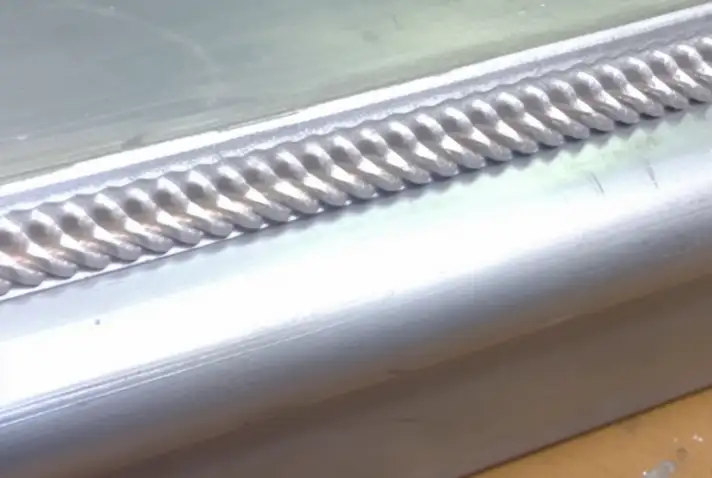
Pre-welding Preparation
Preparation of Materials
It is crucial to prepare materials properly for GMAW to ensure high-quality welding, especially when using aluminum, because it is highly reactive to contaminants.
Cleaning and Degreasing
Before welding, aluminum surfaces should be cleaned to remove any oxide and contaminants such as oil or dirt. To avoid contamination, use a stainless-steel wire brush designed specifically for aluminum. After brushing the surface, use a solvent such as acetone or an aluminum cleaner to remove any remaining grease.
Aligning and clamping
Align the pieces exactly after cleaning. Clamps can be used to secure the material during the welding process. It prevents the material from warping or moving due to heat. This ensures a cleaner, more accurate joint.
Machine Setup
For GMAW to work on aluminum, you must set up your machine correctly.
Configuring Voltage & Wire Speed
The thickness of aluminum and the type of wire are essential factors in determining the correct settings. Aluminum requires higher voltage and wire feed speeds than steel. Start with the manufacturer’s recommended settings and then adjust accordingly.
Test Runs and Adjustments
Test your project on scraps of the same thickness and material. You can then fine-tune your voltage and wire speed. Adjust the settings until you get good penetration and a bead that is clean without excessive spatter.
GMAW Aluminum Welding Techniques
Basic Welding for Aluminum
It is essential to master the basic techniques of GMAW to achieve firm and visually pleasing welds.
Push vs. Pull Techniques
Pushing is more often preferred to pulling when welding aluminum. The torch can be pushed away from the weld pool to improve visibility, reduce slag accumulation, and provide cleaner gas coverage. This technique produces cleaner, smoother welds that are less porous.
Angle and Speed of welding
Keep a constant angle of 10 to 15 degrees tilted in the direction of travel. This angle allows for better heat and gas distribution. The welding speed should be high enough to prevent overheating of aluminum but low enough to allow for adequate filler metal and fusion.
Advanced Techniques
As your projects change, and primarily as you work with thicker pieces of aluminum, advanced GMAW skills become more critical.
Dealing with Thicker Materials
Consider using a mixture of argon, helium, and power settings to create thicker aluminum. It is also beneficial to pre-heat the metal to reduce the cracking risk and manage heat dissipation.
How to Reverse Warpage and Distortion
Use backstep and intermittent welding techniques to minimize distortion and warpage. These methods allow for the cooling of the material between welds and control the heat input. They maintain structural integrity and alignment.
Troubleshooting common issues
GMAW aluminum problems can be solved with a few simple adjustments.
Preventing Burn Through
Use a lower voltage, a faster wire feed, and a higher travel speed to prevent burn-through. These adjustments reduce the amount of melting and manage heat input.
Spatter and Porosity Management
Reduce spatter with a finely tuned gas flow. Also, make sure the wire feed rate matches the welding current. For a porosity-free weld, ensure the material is dry and clean before welding. Also, the shielding flow must be adjusted to achieve adequate coverage.
After-Welding Practices
Cooling and cleaning
It is essential to let the aluminum cool down properly after welding. Avoid rapid cooling methods such as compressed air or water, which can cause stress and cracking. Let the piece cool in ambient air. Remove any slag with a wire brush and clean any spatter, oxidation, or slag that may have formed while welding.
Methods of Inspection and Testing
It is essential to ensure the integrity and quality of your welds, mainly when they are used in critical applications. Post-welding procedures include regular inspections and tests.
Visual Inspections
Start by performing a visual inspection of the area surrounding the weld. You can easily detect discontinuities like cracks, undercuts, or incomplete fusion. A uniform, smooth bead indicates a good weld.
Non-destructive Testing Techniques
Non-destructive tests (NDT) can be used for a more detailed analysis. Common techniques include:
- Ultrasonic Testing: High-frequency sound waves detect defects beneath the surface weld. This method can be used to identify internal cracks and porosity.
- Radiographic Test (RT): Uses X-rays and gamma radiation to create images of a weld. This technique is excellent for visualizing the internal structures of welds and detecting defects.
- Eddy current testing: Uses electromagnetic induction for surface and near-surface defects. This method is beneficial for thin material.
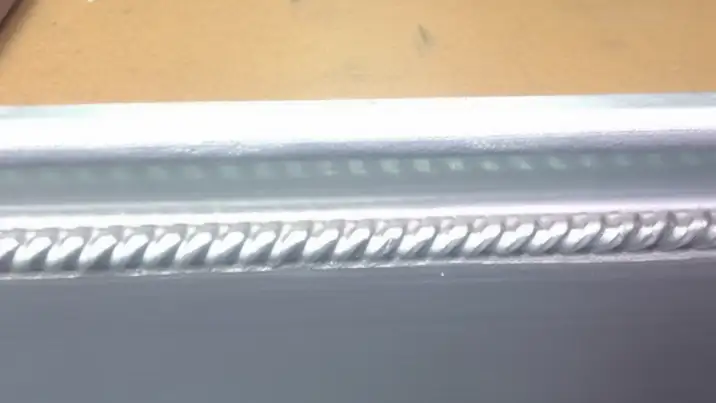
Optimizing GMAW Aluminum Welding Quality
The Best Parameters to Optimize Results
You need to control and adjust various parameters to achieve the best weld in GMAW when working with aluminum. How to fine-tune the settings for better results
- Voltage Settings and Current: To weld aluminum, you must precisely control voltage and current. You can start with the recommended settings for your type of aluminum and thickness, then make adjustments based on test welds.
- Wire feed speed: In aluminum, it is best to use a faster wire feed to maintain a stable arc. This will also compensate for heat dissipation. Adjust the wire feeding to match the current settings; a balanced arc will sound steady and consistent.
- Travel speed: How fast you move the torch across the material will affect the bead and penetration. A travel speed that is too fast can result in inadequate penetration. However, a slow speed can cause excessive heat buildup, resulting in distortion and weakening of the weld.
- Torch angle and technique: Generally, a slight push (leading torch) angle is beneficial for deeper gas coverage and better penetration. Try different angles and see how it affects the overall quality of your weld.
- Shielding gas composition: Pure argon for aluminum is the most common. Helium, however, can be used to increase penetration in thicker sections due to its excellent thermal conductivity.
Conclusion
Mastering GMAW aluminum welding can improve your project’s quality and efficiency. Understanding and using the correct techniques from pre-welding to post-welding practice will ensure that you get a durable, strong weld.
Do you need a reliable sheet metal parts manufacturer? Shengen is the place to go. We specialize in sheet metal laser cutting, bending, surface finish, and CNC Machining. Reach out to Shengen Today and seek help from professionals!
FAQ
What is the ideal wire diameter to use for welding thin aluminum sheets?
Avoid burn-through by using 0.030 to 0.0.035 inch wire diameter on thin sheets.
How can I reduce excessive welding spattering?
Use an anti-spattering spray and adjust your voltage and wire feeding speed accurately. Keep your equipment clean.
Can GMAW be applied to all types of aluminum alloys?
GMAW can be used for many types of aluminum alloys, but it is essential to check the compatibility with alloys that are prone to cracking, such as those in the 2000 or 7000 series.
What are the advantages of GMAW over other methods for aluminum?
GMAW is a cost-effective way to weld aluminum because it increases productivity and reduces costs by reducing labor through faster welding speeds. It also minimizes waste material and is energy efficient.
More Resources:
Aluminum Welding Wire Selection – Source: Hobartbrothers
Preventing Weld Spatter – Source: Fronius
Non-Destructive Testing Methods – Source: Flyability
Hey, I'm Kevin Lee

For the past 10 years, I’ve been immersed in various forms of sheet metal fabrication, sharing cool insights here from my experiences across diverse workshops.
Get in touch

Kevin Lee
I have over ten years of professional experience in sheet metal fabrication, specializing in laser cutting, bending, welding, and surface treatment techniques. As the Technical Director at Shengen, I am committed to solving complex manufacturing challenges and driving innovation and quality in each project.

